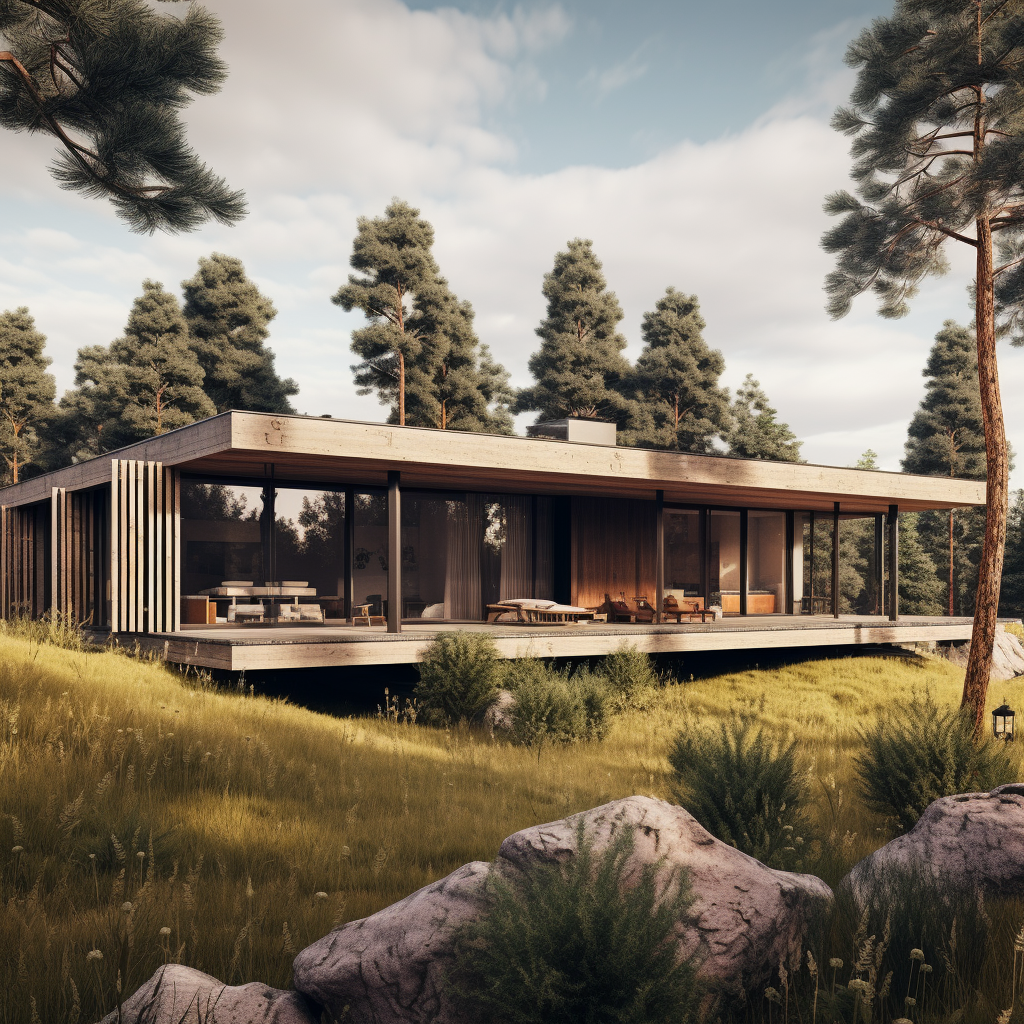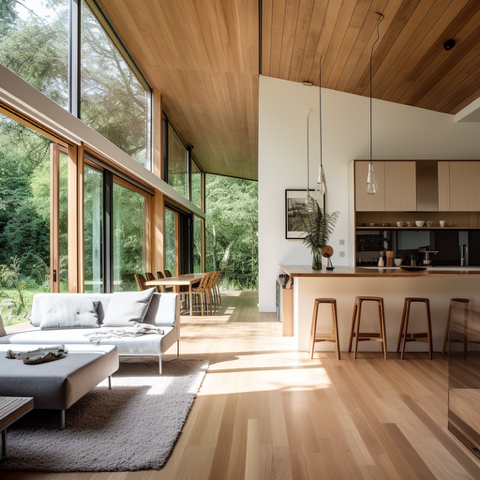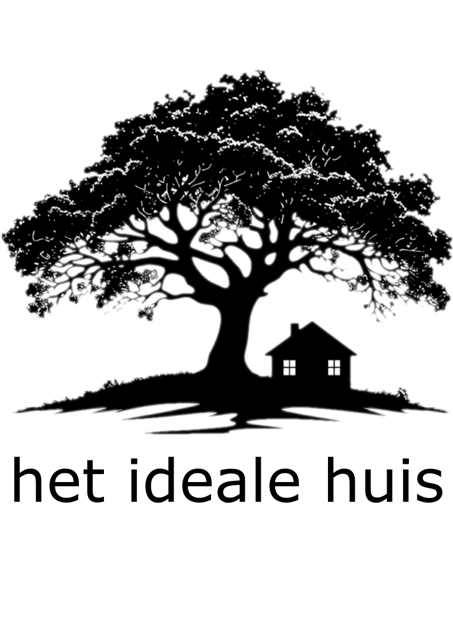The advantages
THE IDEAL HOMEFrom advantages of wood construction in general to ... the ideal house
Timber construction is increasingly taking place and has numerous advantages. But you don't build the ideal house with it. The ideal house – which you can order on this website-is about more than the wood construction that you often hear about. Below you can read all about the difference between ordinary wood construction and the ideal house. But let's start with the advantages of building with wood.
An important advantage of wood construction in general is about CO2. Example: with the construction of a million wooden houses, you would2- can reduce emissions by a quarter. With regular construction it is exactly the opposite, then you are not talking about less CO2, but about more. In other words: if we continue on the path of concrete, stone and steel, the same amount of houses will come with the same amount of CO2 at and not a bit too. As much as 55 million tons.
Another striking advantage, still of timber construction in general, is about a reduction in construction time. For example, in London, with the Dalson Works project, the construction time was reduced by nine months. And it didn't stop there, because instead of the 700 full trucks that had been required in traditional concrete construction, only 98 truckloads were now required. In other areas, points are also scored, for example when it comes to absenteeism. This was measured in Venlo, which had a wooden town hall made and saw the absenteeism of the officials decrease. It provides the municipality with an annual saving of 480,000 euros.
Regular wood construction has numerous advantages over building with concrete, stone and steel, but still has a number of significant disadvantages. Where things often go wrong is at the end of the cycle. Everything comes to an end, including the house we live in. In regular wood construction, the wood is usually glued and all kinds of unnatural materials have been used, which, when broken down, creates unusable waste that has to be disposed of in the scrap heap. Not ideal. The ideal house, on the other hand, is completely circular, therefore has a cradle to cradle gold-certificate. All the wood of the house can be reused at the end of the cycle, but also if after fifty or a hundred years, for example, a wall has to make way for an extension: the planks that have formed the wall can be reused in the renovation. But perhaps the cycle lasts much longer, as with some 450-year-old houses in Austria or the Japanese Horyuji temple, which has been standing for 1600 years. And: 'Amsterdam has been standing on wooden poles for 500 years. There are currently no other building materials that can last that long. So I have full confidence in Wood,’ says Jan Willem van De Kuilen, professor of wood technology at TU Delft.
Saving
An energy saving of 60 to 70 percent. Depending on the energy price, you can then calculate how much cheaper it is to live in wood. There is no better material than composite wood to heat hold on, a lot better then stone or concrete and even twice as good as glued timber.


Thermoregulatory
The wood has a heat-regulating property and ensures that despite heat or cold outside, the indoor temperature in the House remains fairly constant. The consequence of these properties is that none of the the wall from the ideal house need to be isolated. Nevertheless, it is possible to achieve a U-value of only 0,2 W / m2K and a lambda value of 0,079 W / m2K.
What does this mean in practice? Let's assume an outside temperature of minus 10 and an inside temperature of 21 degrees. Without heating, it takes three times as long, namely a month, before the ideal wooden house is cool to zero degrees, in comparison with a house with stone walls of 38 centimeters plus 10 centimeters of styrofoam. The ideal house, compared to a traditional house with the same R-value, therefore only needs a third of the heating.
Life-prolonging
Residents of the ideal house live longer. Research shows that the cardiovascular system has to work less hard, which makes you live longer. The positive effects on heart rate have also been measured in schoolchildren in a similar wooden school room. What would be the influence on a person's mood, his well-being? In Japan and Austria, research has been done on the experiences of people in environments with and without Wood, in which the wooden environment was perceived more positively.
Fireproof
The wooden ideal house scores in terms of fire safety better than reinforced concrete. There is even already a fireproof door made of the wood and previously there were wooden ones chimneys. An important reason that this is possible is that Wood has a smaller density then have steel or concrete.
CO2 positive
With wood you build CO2- negative and also when it comes to nitrogen there are advantages. The wooden walls and roof sections are light and can also be assembled with light machines – and thus with little or no nitrogen emissions – on the construction site. There are even interesting developments in the field of the foundation. If it is made of wood, you do not need concrete and the Earth remains intact.
Super fast construction
After just one day on the construction site, the assembled parts of the House are rain and windproof. Many days later, the structure of the House dismounted. ONabout one or two weeks later, the builders will leave and you will receive the key. Then you can do other construction or odd jobs in peace.
Highly achievable certification on safety and stability
Is the house safe and secure? Mechanical earthquake tests done with the ideal house – light and flexible – threatened to fail because it did not collapse, while the moment of collapse indicates which certificate may be issued. After the walls were weakened, the building collapsed, and the construction received the highest achievable certification. Another example of the resilience of the ideal home comes from Austria. There, a wooden building was faced with a flood that had not occurred in a hundred years and lasted four months. Nevertheless, the building could soon be put back into use afterwards.
Raw
The wood is unprocessed and remains so because varnishes, paints or coatings are not necessary. The wood breathes and has optimal humidity, which also allows a fifty-year warranty on the absence of mold and condensation. Also, the wood is not static, so it attracts less dirt. This contributes to the indoor climate and is more specifically of interest to those who are sensitive or allergic to dust. Also, do not forget that before replacing wood with modern means, it was successfully used in conditions where hygiene was paramount, such as preparing food, processing dairy products. Certain types of wood would therefore do well in hospitals and other places where there is no place for bacteria to form and hygiene is a priority. See also the work of Annett Milling and author Michael Pollan on the different influences of wood, glass, plastic and steel on bacteria and germs.
Despite the fact that the wood of the ideal house is raw, there are options. Such as that the wooden walls outside and inside can be lined with stone, clay and other types of wood. And what about a beautiful blackened finish in traditional Japanese yakisugi style.
Radiation bites outside
Electromagnetic radiation such as wifi does not penetrate the House. The construction technique has already been used to put down a non-eavesdropping building of a secret service.
Quiet
The ideal house offers good protection against noise pollution. In fact, the most stringent standards are not only met, but well exceeded, up to twice as much – think of sound insulation up to 63 decibels. This not only promotes peace, but also acoustics. By the way, the officially quietest hotel in the world is made with the wood of the ideal house.
Subtle scent
Scientific research that has been done on the subjective experience of living shows that living in a wooden house feels better than living in a regular house. One of the reasons is an almost imperceptible smell that the wood gives off to which the human body reacts very well. There are countries where people take a bag of wood chips to bed because it makes them sleep better. In Japan, for example, research is being done into what is called shinrin-yoku, the therapeutic effect on body and mind when seeing a forest and sniffing its smell.
The parts of the House are built in peace and comfort in a factory, which is beneficial for the life expectancy of the construction workers. The plant uses renewable energy and avoids construction waste as much as possible. Door and window openings are not sawn away, but are part of the design. Then the parts of the House are assembled on the construction site in just a few days. Such a short construction time is financially beneficial and also pleasant for the environment.

An interesting advantage of building with wood is the freedom it offers in design. All sorts of now obvious limitations that building with stone, concrete or steel entails, wood leaves far behind. Think freely and creatively when designing your ideal home – much more is possible than with the old way of building.
